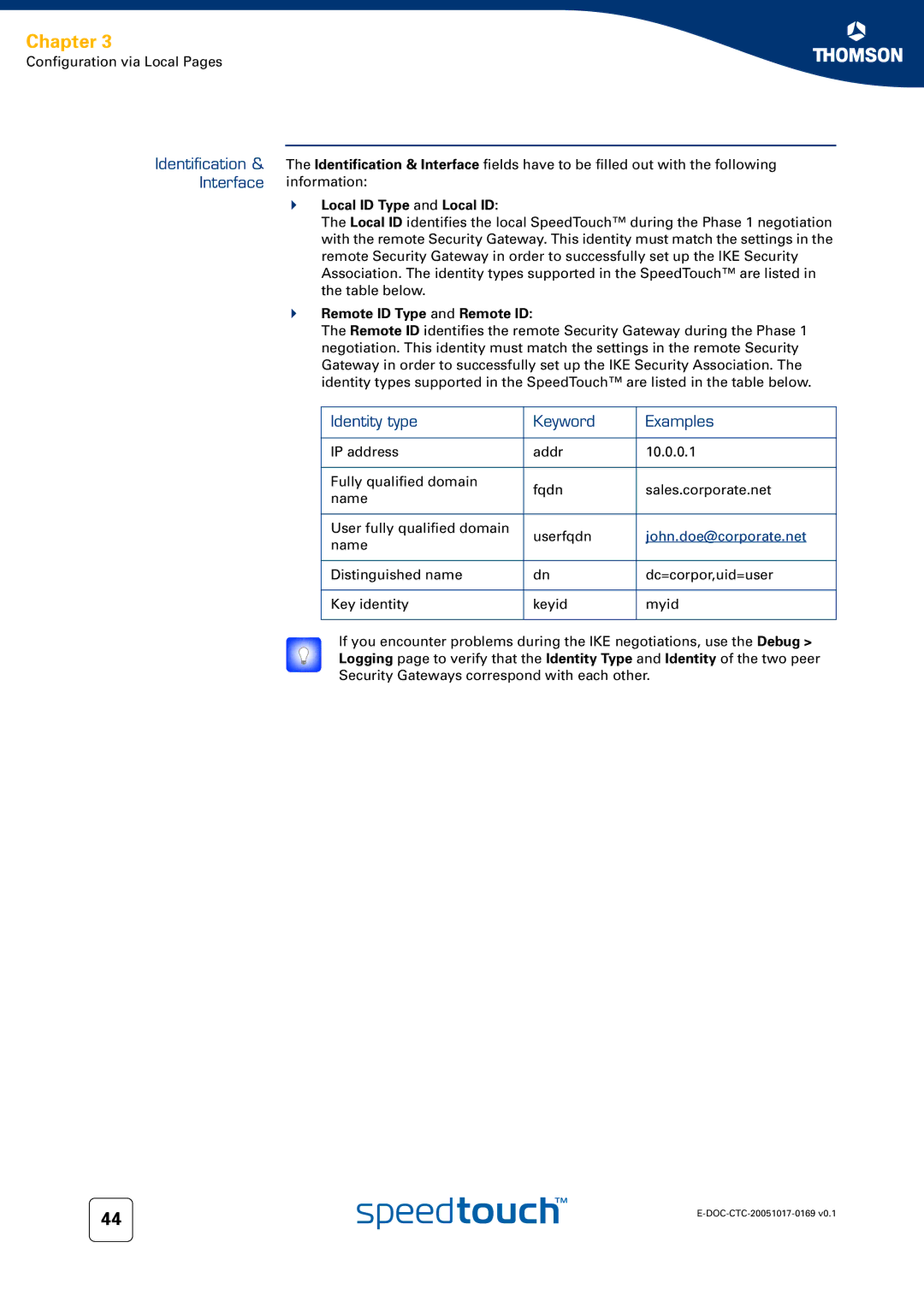
Chapter 3
Configuration via Local Pages
Identification &
Interface
The Identification & Interface fields have to be filled out with the following information:
Local ID Type and Local ID:
The Local ID identifies the local SpeedTouch™ during the Phase 1 negotiation with the remote Security Gateway. This identity must match the settings in the remote Security Gateway in order to successfully set up the IKE Security Association. The identity types supported in the SpeedTouch™ are listed in the table below.
Remote ID Type and Remote ID:
The Remote ID identifies the remote Security Gateway during the Phase 1 negotiation. This identity must match the settings in the remote Security Gateway in order to successfully set up the IKE Security Association. The identity types supported in the SpeedTouch™ are listed in the table below.
Identity type | Keyword | Examples | |
|
|
| |
IP address | addr | 10.0.0.1 | |
|
|
| |
Fully qualified domain | fqdn | sales.corporate.net | |
name | |||
|
| ||
|
|
| |
User fully qualified domain | userfqdn | john.doe@corporate.net | |
name | |||
|
| ||
|
|
| |
Distinguished name | dn | dc=corpor,uid=user | |
|
|
| |
Key identity | keyid | myid | |
|
|
|
If you encounter problems during the IKE negotiations, use the Debug > Logging page to verify that the Identity Type and Identity of the two peer Security Gateways correspond with each other.
44 | |
|
